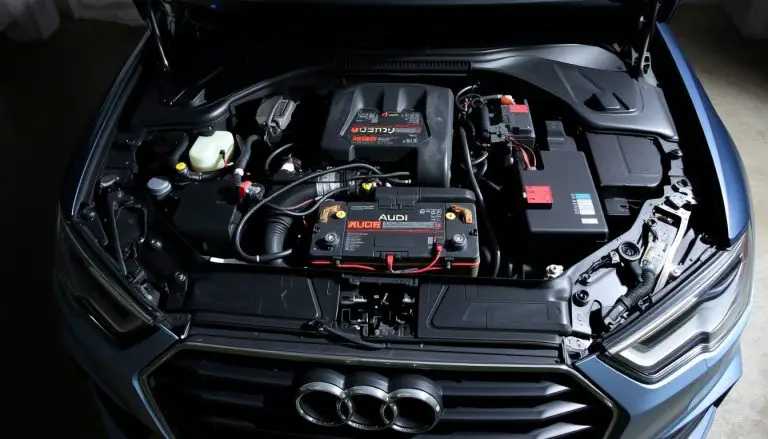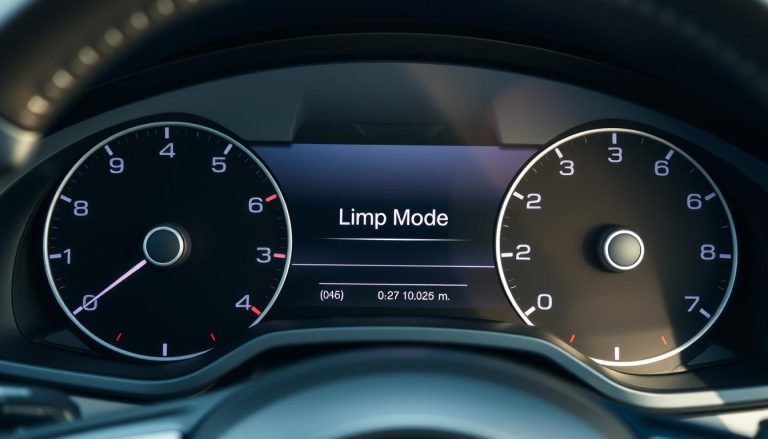Grasping the mechanics of accessing your vehicle’s engine compartment is paramount for both routine upkeep and emergency repairs. For BMW aficionados, the ability to release the hood stands as a cornerstone skill. It empowers you to conduct essential inspections and swiftly rectify any malfunctions.
The procedure is remarkably straightforward, capable of being executed within a brief span. Adherence to the succinct instructions provided in this guide will enable you to effortlessly gain access to the engine compartment. This proficiency is indispensable for BMW proprietors, fostering a sense of security and efficiency in vehicle maintenance endeavors.
Key Takeaways
- Learn the simple steps to access your BMW’s engine compartment.
- Understand the importance of being able to release the hood.
- Discover how to perform routine checks and maintenance tasks.
- Save time and gain peace of mind with this essential knowledge.
- Follow a straightforward guide tailored for BMW owners.
Why Knowing How to Open Your BMW Hood is Essential
The proficiency in opening your BMW’s hood transcends mere convenience; it is a critical factor in the vehicle’s overall health. Access to the engine compartment facilitates timely maintenance and repairs, potentially averting expensive future repairs. This underscores the importance of regular hood access for your vehicle’s well-being.

Regular Maintenance Requirements
Ensuring the longevity and performance of your BMW necessitates regular maintenance. Fluid checks, such as engine oil, coolant, and brake fluid, are paramount. The hood serves as a gateway to these critical systems, enabling you to monitor levels, detect leaks, and replenish fluids as required. Routine inspections beneath the hood can also uncover potential issues early, ensuring your BMW operates optimally and efficiently.
Emergency Situations
In emergency scenarios, the ability to open your BMW’s hood is invaluable. Whether facing a leak, overheating, or needing a jump-start, immediate access to the engine is essential. Emergency access can significantly reduce potential damage and expedite your return to mobility. Mastery in safely and efficiently opening the hood equips you to handle any unforeseen circumstances, safeguarding both you and your vehicle.
Preparing to Open Your BMW Hood
The process of opening your BMW hood necessitates a series of preparatory actions, aimed at ensuring a secure and efficacious experience. It transcends the mere act of pulling a lever; it demands a comprehensive approach to the task at hand.
Safety Precautions
When venturing under the hood of your BMW, prioritizing safety is paramount. Ensure your vehicle is parked on a level surface and apply the parking brake to prevent any accidental movements. It is also imperative to confirm that the engine is turned off and has cooled down to avert burns or injuries. Protective gloves and eyewear are advisable to shield against sharp edges or debris.

Required Tools and Materials
For most BMW models, specialized tools are not required to open the hood. Yet, a basic toolkit can prove invaluable. A flashlight should be readily available, given the potential for low-light conditions. Certain models might necessitate a screwdriver for adjustments under the hood. It is advisable to consult your owner’s manual to familiarize yourself with your BMW’s specific requirements.
Positioning Your Vehicle Properly
Proper positioning of your vehicle is essential before attempting to open the hood. As previously stated, it should be on a flat, stable surface. If situated on a sloping driveway, position the front of the car higher than the rear to prevent rolling. Engage the parking brake and, on slopes, consider using wheel chocks for enhanced safety.
Adhering to these preparatory measures will adequately equip you to safely and efficiently open your BMW hood, facilitating any necessary checks or maintenance.
Opening Your BMW Hood: Step-by-Step Guide
To access the engine and other vital components of your BMW, you’ll need to know how to open the hood safely. This guide will walk you through the process, covering the interior hood release, the safety latch under the hood, and how to lift and secure the hood properly.
Step1: Locating and Pulling the Interior Hood Release
The first step in opening your BMW hood is to locate and pull the interior hood release. This lever is typically found under the dashboard on the driver’s side. It’s designed to release the hood latch, allowing you to access the hood.
Locating the Lever: For most BMW models, the interior hood release lever is situated on the left side under the steering column. You may need to pull it towards you to release the hood.
While the general process is similar across different BMW series, there are some variations. For instance, in some models like the BMW 3 Series, the hood release lever might be more accessible than in larger models like the BMW 7 Series.
- The BMW 3 Series and 5 Series typically have a more straightforward hood release mechanism.
- Larger models, such as the BMW 7 Series and X Series, may have slightly different locations for the hood release due to their larger size and different dashboard layouts.
Step2: Finding and Releasing the Safety Latch Under the Hood
After pulling the interior hood release, you’ll need to find and release the safety latch under the hood. This latch is a secondary safety mechanism that prevents the hood from opening accidentally.
Identifying the Latch: The safety latch is usually located at the center of the hood, near the front. You’ll need to slide your hand under the hood to find and release it.
Latch Locations by Model Year
The location of the safety latch can vary slightly depending on the model year of your BMW. Generally, newer models have a more accessible latch, while older models might require a bit more effort to locate and release.
| Model Year | Latch Location |
|---|---|
| 2010-2015 | Center, near the front |
| 2016-2020 | Slightly offset to the driver’s side |
| 2021 and newer | Center, with an improved release mechanism |
Step3: Lifting and Securing the Hood Properly
Once the safety latch is released, you can lift the hood. It’s essential to secure it properly to avoid any accidents or damage.
Securing the Hood: Most BMW models come with a hood prop rod that you can use to secure the hood in the open position. Ensure it’s properly engaged to prevent the hood from falling.
Troubleshooting Common BMW Hood Issues
Several common problems can prevent your BMW hood from opening or closing properly. Understanding these issues and their solutions can help you maintain your vehicle more effectively.
Hood Release Lever Not Working
If your BMW’s hood release lever is not working, it could be due to a broken or stuck lever mechanism. First, check if the lever is stuck due to dirt or corrosion. Applying some lubricant might resolve the issue. If the lever is broken, it may need to be replaced. Consult your BMW’s repair manual or a professional mechanic for assistance.
Steps to diagnose a faulty hood release lever:
- Inspect the lever for any visible damage or corrosion.
- Apply lubricant to loosen any stuck parts.
- Test the lever after lubrication to see if it functions properly.
Safety Latch Stuck or Difficult to Access
The safety latch under the hood can sometimes become stuck or difficult to access. This could be due to dirt accumulation or misalignment. To resolve this, gently clean the area around the latch with a soft brush or cloth. If it’s still stuck, consider using a lubricant to ease the mechanism.
As “a well-maintained safety latch is crucial for the proper functioning of your BMW hood,” regular checks are advisable.
Properly Closing Your BMW Hood After Use
Properly closing your BMW hood is just as important as opening it. Ensure that the hood is aligned correctly with the latch before closing it. A gentle push should secure it in place. If the hood doesn’t close properly, check for any obstructions or misalignment.
“Always ensure your BMW hood is securely closed before driving to prevent accidents.”
Following these troubleshooting tips can help you address common BMW hood issues efficiently. Regular maintenance and checks can prevent many of these problems from arising in the first place.
Conclusion
The process of opening your BMW hood, when dissected into its constituent parts, reveals a sequence of actions that are both logical and straightforward. Adherence to the methodology presented in this guide guarantees unimpeded access to the engine and other pivotal components, facilitating routine maintenance and inspections.
Embarking on the journey to open your BMW hood necessitates the identification and activation of the interior hood release mechanism. Subsequently, one must locate and release the safety latch positioned beneath the hood. The final step involves the lifting and securing of the hood, a procedure that, when executed correctly, ensures the integrity of your vehicle’s engine compartment. Regular adherence to these steps is instrumental in maintaining the health of your BMW, encompassing tasks such as fluid level checks, belt inspections, and the timely resolution of any mechanical anomalies.
Proper understanding and execution of the hood-opening procedure are paramount in averting potential malfunctions and ensuring the continued optimal performance of your vehicle. For further insights into BMW maintenance and additional guides, refer to your owner’s manual or seek the expertise of a certified BMW technician. This proactive approach will maintain your vehicle in peak condition, enhancing both its longevity and reliability.
FAQ
How do I open the hood of my BMW?
To access the hood of your BMW, initiate by locating and activating the interior hood release lever, situated beneath the dashboard. Subsequently, proceed to the vehicle’s front and release the safety latch positioned beneath the hood. The final step involves lifting the hood and securing it with the hood support rod.
What are the differences in opening the hood across various BMW series?
The procedure for opening the hood is largely consistent across BMW series, yet variations in the safety latch’s location and the hood release mechanism’s design may occur. For instance, certain models might feature a differently positioned latch or necessitate a distinct motion to release it.
What should I do if my BMW hood release lever is not working?
In the event that your BMW’s hood release lever is inoperable, first verify that it is not obstructed or damaged. If it persists in malfunctioning, refer to your owner’s manual or seek assistance from a BMW dealership or mechanic. The issue might stem from a faulty cable or another mechanical defect.
How do I properly close my BMW hood after accessing the engine?
To ensure the proper closure of your BMW hood, remove all tools and materials from the engine compartment. Lower the hood slowly until it is almost closed. Release the hood support rod and then gently push the hood down until it secures with a latch. Verify that the hood is fully closed and latched before resuming operation.
What safety precautions should I take when opening my BMW hood?
When opening your BMW hood, ensure the vehicle is parked on a level surface and the parking brake is applied. Confirm that the engine is cool to avoid burns and exercise caution around moving parts and electrical components. Consulting your owner’s manual for specific safety guidelines is advisable.
What are some common issues with BMW hoods and how can I troubleshoot them?
Common BMW hood issues include a stuck or inaccessible safety latch, a malfunctioning hood release lever, or difficulties with the hood’s closure. For troubleshooting, refer to your owner’s manual or contact a BMW dealership or mechanic. Regular maintenance can also mitigate these problems.
Are there any specific tools or materials required to open my BMW hood?
Generally, no specialized tools are required to open your BMW hood. It is prudent, though, to consult your owner’s manual for any model-specific recommendations. A flashlight or basic tool might be useful in certain situations.


